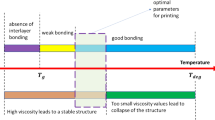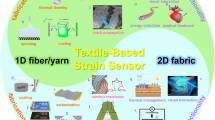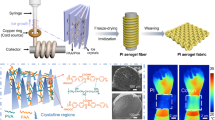Abstract
Consideration of the garments’ time dependent mechanical behaviour such as stress relaxation is of great importance, since it determines the garments performance during body movement and various body positions. Thus, the behaviour of the garments constituent elements including fabric, sewing thread and seam structure should be analysed. In this regard, in the current study, in addition to examination of tensile behaviour of two common sewing threads in two straight and loop states, the tensile property of a worsted fabric with seam and without seam were investigated. Then, the stress relaxation behaviour of these elements in terms of different parameters such as the seam type, sewing thread and strain level were assessed. The outcomes of this investigation disclosed that the sewing thread in loop state presents higher stress relaxation. Moreover, exerting elastic strain, would lead to higher tendency of examined structures to recover to their initial state. Generally, seamed fabrics had higher stress relaxation in comparison to fabric due to the discontinuous structure of seamed fabric and the flexibility of seam line. However, the stress relaxation of the sewn fabric depends on the seam type, and particularly the sewn fabric with superimposed seam had higher stress relaxation compared to the lapped seam. Furthermore, sewing thread structure can affect the stress relaxation of seamed fabric. Finally, the study of the correlation of viscoelastic models to the stress relaxation behaviour of sewing threads, fabric and the seamed fabric, revealed that the two-component Maxwell model had the best correlation with the experimental results.
Similar content being viewed by others
References
K. Shimazaki and D. W. Lloyd, Text. Res. J., 60, 654 (1990).
J. Webster, R. M. Laing, and B. E. Niven, Text. Res. J., 68, 854 (1998).
I. Ajiki and R. Postle, Int. J. Cloth. Sci. Tech., 15, 16 (2003).
V. K. Midha, A. Mukhopadhyay, R. Chatopadhyay, and V. K. Kothari, Text. Res. J., 79, 1155 (2009).
K. Yildirim, Text. Res. J., 80, 472 (2010).
V. Sular, C. Mesgul, H. Kefsiz, and Y. Seki, J. Text. Inst., 106, 19 (2015).
M. D. Nikolic and T. V. Mihailovic, Int. J. Cloth. Sci. Tech., 8, 9 (1996).
J. Gersak, D. Sajn, and V. Bukosek, Int. J. Cloth. Sci. Tech., 17, 188 (2005).
D. Sajn, J. Gersak, and R. Flajs, Text. Res. J., 76, 742 (2006).
E. Hezavehi, M. Azadiyan, and P. Zolgharnein, Fibers Text. East. Eur., 21, 64 (2013).
R. Milasius and G. Laureckiene, Fibers. Text. East. Eur., 22, 97 (2014).
S. Younesi and N. Ezazshahabi, J. Text. Inst., 111, 453 (2020).
SH. Abrishami, N. Ezazshahabi, and F. Mousazadegan, J. Text. Inst., doi: https://doi.org/10.1080/00405000.2020.1768773 (2020).
R. Shekarian, S. M. Hejazi, and M. Sheikhzadeh, Int. J. Cloth. Sci. Tech., doi: https://doi.org/10.1108/IJCST-12-2016-0135 (2019).
N. Aburaya, K. Murayama, and J. Ajiki, J. Japan Res. Association Text. End-uses, 49, 273 (2008).
Author information
Authors and Affiliations
Corresponding author
Rights and permissions
About this article
Cite this article
Abrishami, S., Mousazadegan, F. & Ezazshahabi, N. Investigation of the Tensile Stress Relaxation Phenomenon in Seamed Worsted Fabrics. Fibers Polym 22, 2333–2343 (2021). https://doi.org/10.1007/s12221-021-0519-7
Received:
Revised:
Accepted:
Published:
Issue Date:
DOI: https://doi.org/10.1007/s12221-021-0519-7




